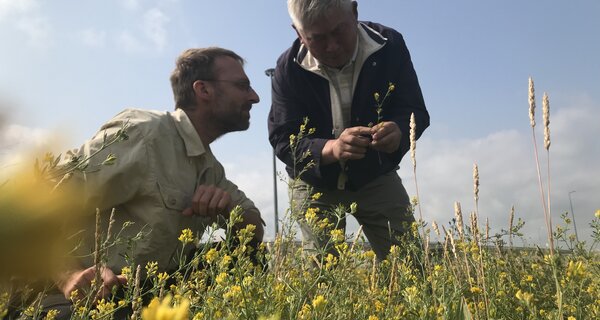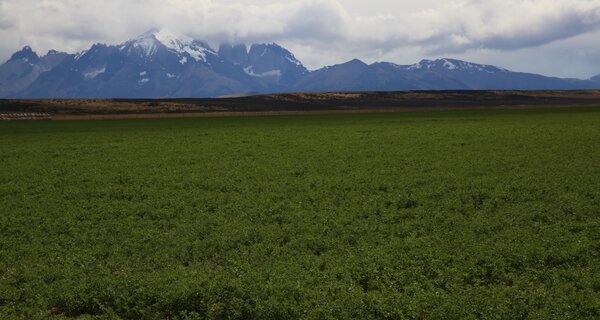A BOLD Future for Alfalfa: More with Less Water
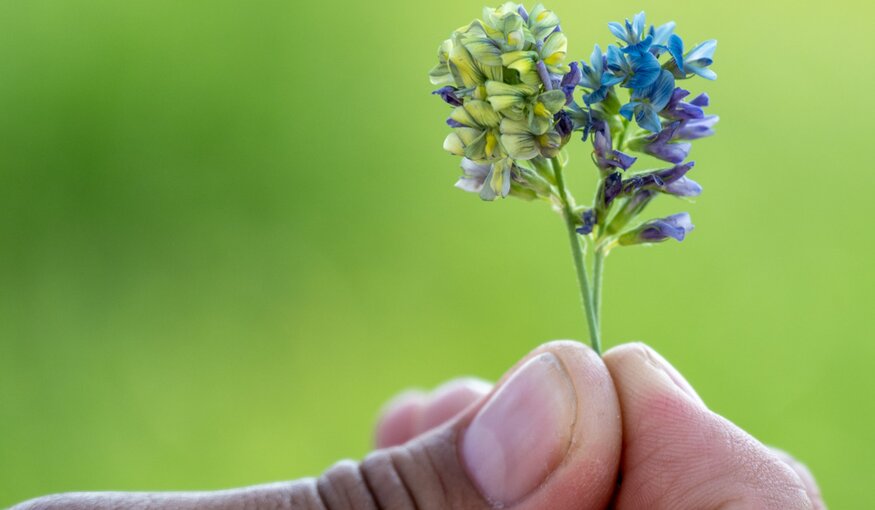
Multi-colored alfalfa (Medicago sativa subspecies varia) at the research farm of the Kazakhstan Research Institute of Agriculture and Plant Growing (KSRIAPG). Photo: Michael Major for Crop Trust
13 September 2023
Nazarov Arken doesn’t hesitate when asked about the problems facing alfalfa growers like himself.
“There’s our problem,” said the farmer from Yenbek in southeastern Kazakhstan, squinting through the late-summer haze at some distant mountain peaks as he furrowed his brow. “Just 20 years ago, those mountains were covered with glaciers. Now I can hardly see any.”
Farmers in Kazakhstan and Kyrgyzstan are worried these days. For generations, they have relied on the glacial meltwaters of the Tien Shan mountains – known as the “water tower of Central Asia” – to irrigate their fields and to drink. Now they all say the same thing: there’s not enough water.
“Those waters are not nearly as abundant as they were just a few decades ago due to the changing climate,” said Alan Humphries, an alfalfa breeder with the South Australian Research and Development Institute (SARDI) who recently travelled to Kazakhstan and Kyrgyzstan and met with alfalfa farmers. “Naturally, the farmers are worried.”
Alan doesn’t possess powers of cryokinesis like some superheroes and can’t stop the glaciers from receding, but he thinks he can help the farmers grow more and better alfalfa with less water.
Alfalfa – or lucerne, as some call it – is widely grown worldwide as a feed for livestock. Farmers love it because it has a long taproot which can draw moisture stored deep in the soil. That helps to extend alfalfa’s growing season during dry conditions. And alfalfa can improve soil by absorbing nitrogen – a critical nutrient for farming – from the air and converting it to usable nitrogen in the soil.
More and better alfalfa is great news for livestock. Animals who feed on alfalfa hay tend to gain weight faster, produce more milk and are healthier than those fed other forages.
Starting with the Wild
Alan has been improving alfalfa using traditional breeding methods since 1998. But, at some point, breeders can run out of the genetic diversity required to improve crops, particularly when faced with the huge challenges of a changing climate. Fortunately, the genetic diversity that Alan needs exists in nature. Wild cousins of domesticated alfalfa (or Medicago sativa to scientists) have adapted over millennia to much harsher conditions than many of our commercial alfalfa varieties.
Through the Crop Trust-supported Crop Wild Relatives Project, Alan tapped into that wild diversity and developed some alfalfa variants which he felt would be quite resilient to the environmental challenges that farmers of Central Asia are now facing. His goal was to stretch out the alfalfa growing season so that farmers could harvest more alfalfa at the edges of the season, at times when it’s cold and at times when it’s dry.
“Growing conditions in South Australia are quite different from what you find in Central Asia,” said Alan. “So for proper evaluation, I sent my most promising seeds to partners at the Kazakhstan Research Institute of Agriculture and Plant Growing and the Kyrgyz Research Institute of Livestock and Pastures to grow them out and assess their performance.”
Evaluation in Central Asia
Alan then went to see in person how those varieties are coping with the environmental stresses of Central Asia. A new alfalfa pre-breeding project supported by the Crop Trust’s 10-year BOLD (Biodiversity for Opportunities, Livelihoods and Development) has enabled him to continue his work in close collaboration with his Kazak and Kyrgyz partners.
As Alan reviewed his alfalfa seeds growing in several locations, he saw some promising stars. “Take, for example, CTA040.” Alan said. “It’s the combination of a perennial herb, a shrub and an annual and it could very well be the future of alfalfa.”
The original parents of CTA040 were not expected to tolerate the -20°C cold winters that Central Asia can face. So Alan crossed that alfalfa with the Chinese cultivar Zhongcao No. 3, which has a proven track record in the cold. The resulting CTA040 appears to cope well in the cold and keeps on producing late in the year when there is limited soil moisture.
Alan visited the plots in the middle of summer when it was close to 40°C and examined a trial of Turkestan 15. “It’s an old, yet still popular local variety which was bred to produce all of its yield in summer,” said Alan. “But now as irrigation water becomes scarce, farmers need a variety more like CTA040, that can make the most of natural snowmelt and rainfall in spring without the requirement to irrigate.”
The challenge for farmers will be to transition from irrigated to rainfed agriculture, and to develop strategies to maximize the efficiency of irrigation water when it is available.
The initial identification of promising varieties, like CTA040, is just a start. Before they can reach farmers like Nazarov, Alan and his BOLD partners in Kazakhstan and Kyrgyzstan need to continue to evaluate newly-bred alfalfas under varied conditions in multiple locations.
Nazarov may never again see the massive glaciers which once capped the Tien Shan mountains, but with the BOLD steps being taken to improve alfalfa production, he could very likely still see verdant fields of alfalfa and very healthy livestock.
Categories: BOLD, Alfalfa, Climate Change
About the BOLD Project
BOLD (Biodiversity for Opportunities, Livelihoods, and Development) is a major 10-year project to strengthen food and nutrition security worldwide by supporting the conservation and use of crop diversity. The project works with national genebanks, pre-breeding and seed system partners globally. Funded by the government of Norway, BOLD is led by the Crop Trust in partnership with the Norwegian University of Life Sciences and the International Plant Treaty.


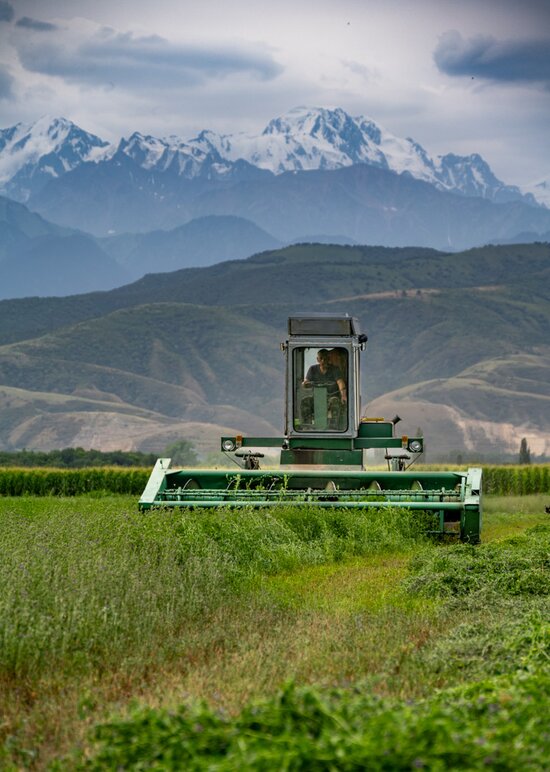
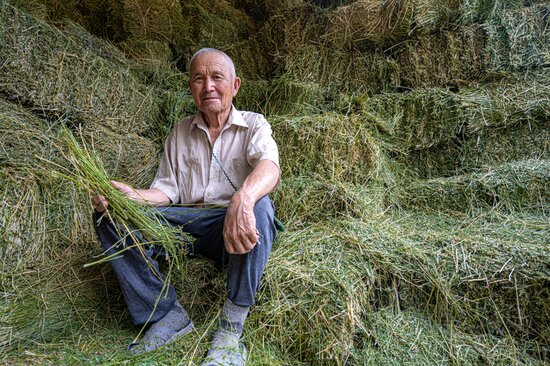
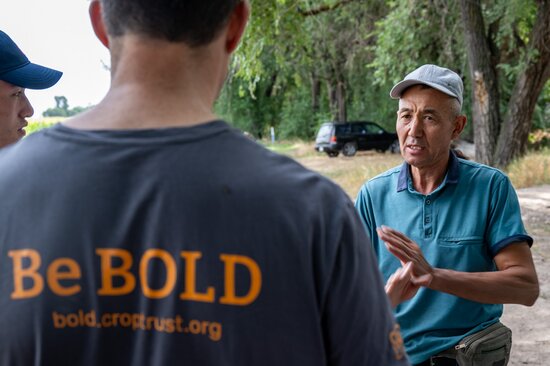
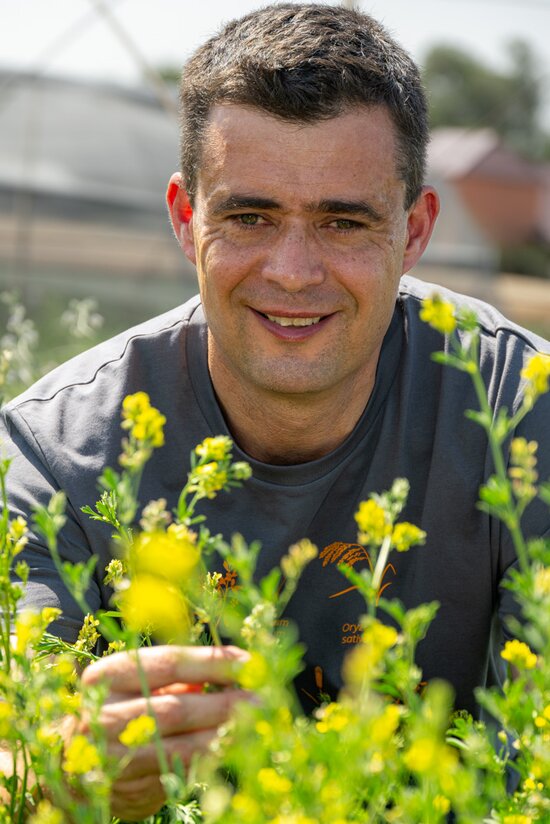
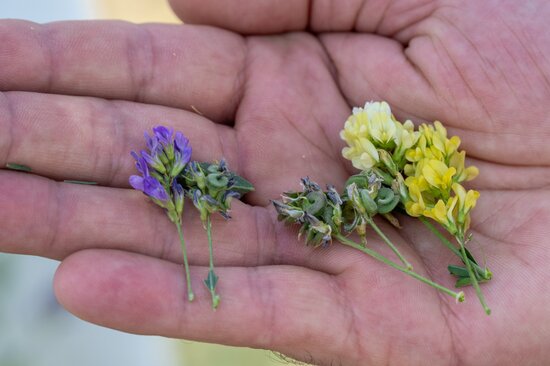
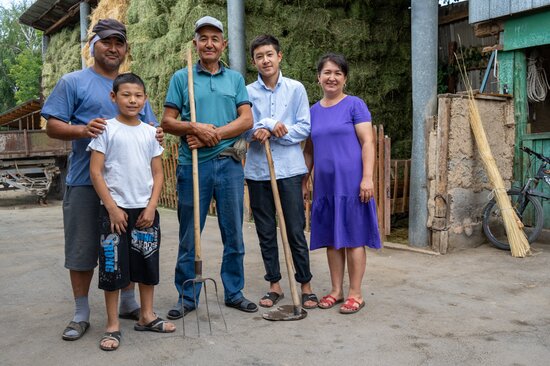
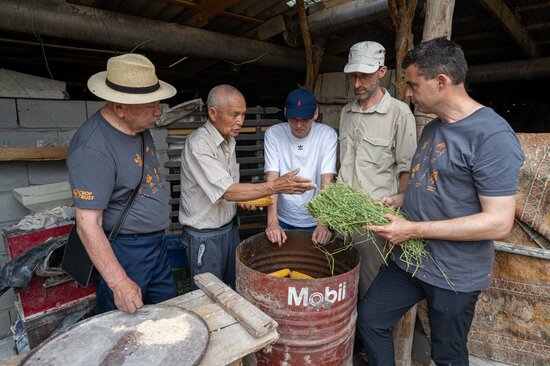
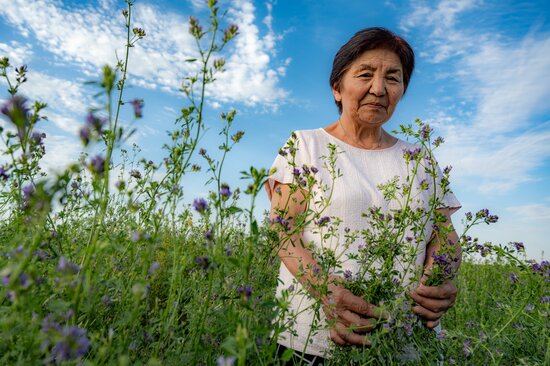
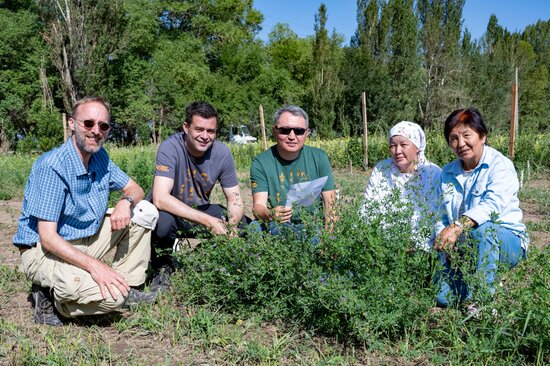
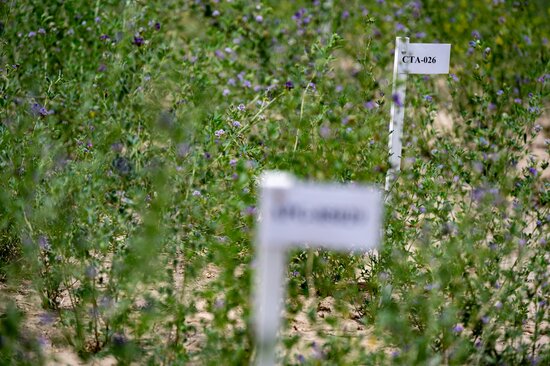
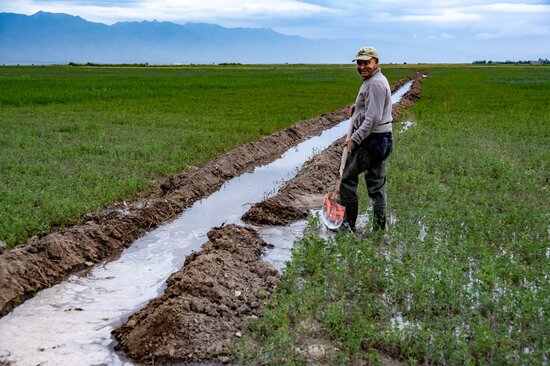
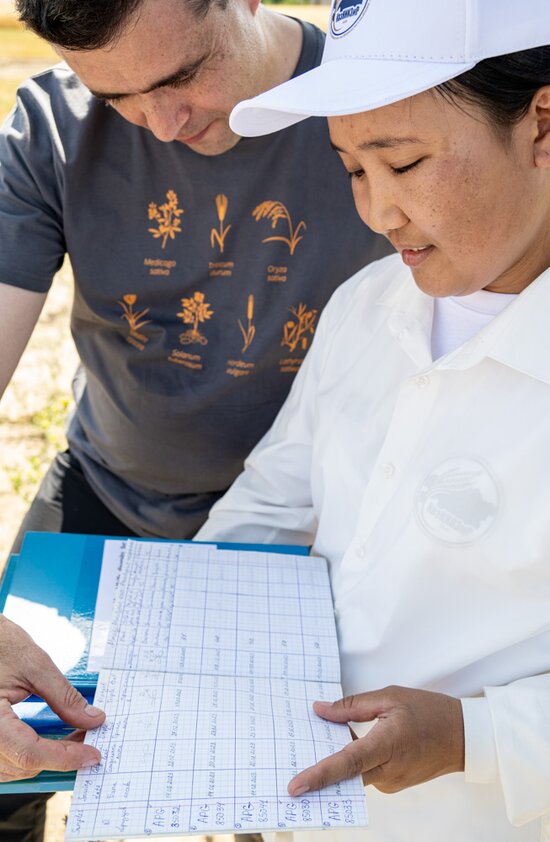
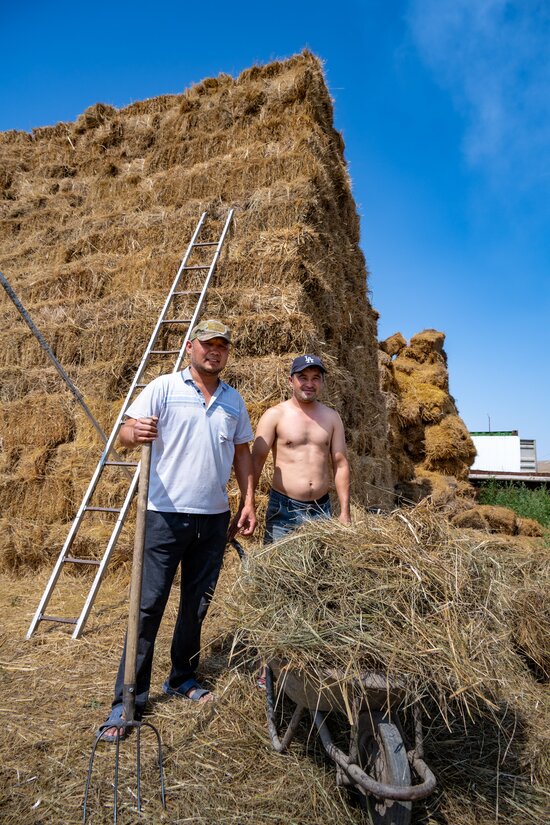
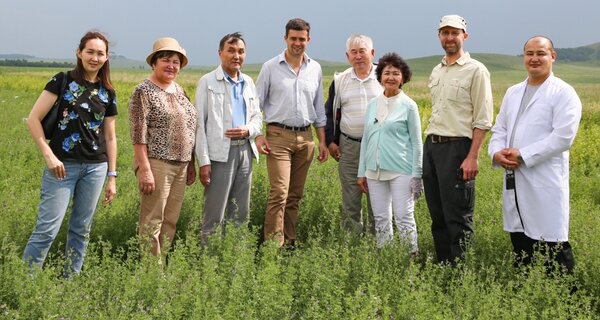
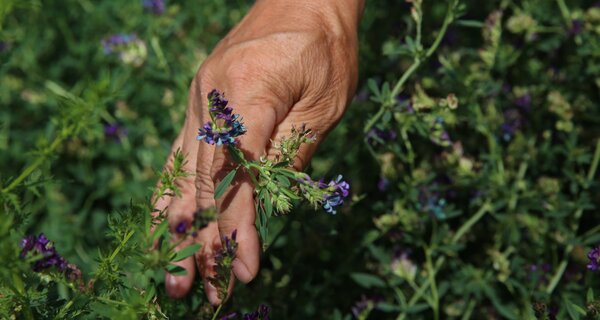
![At Estancia Los Niños, Rene Milicevic shows us one of the three 60+ year old alfalfas that Jorge Ivelic from INIA collected in Magallanes [growing behind the ‘daisy’]. This unique sample is now included in the Crop Wild Relatives pre-breeding trials at INIA Kampenaike. Tolerance to drought and frost are traits that researchers are looking for in Magallanes. In the central part of Chile, researchers are searching for drought and heat tolerance. Photo: LS Salazar/Crop Trust](/fileadmin/_processed_/1/d/csm_BI5A1289_0cffe5c0e0.jpg)
